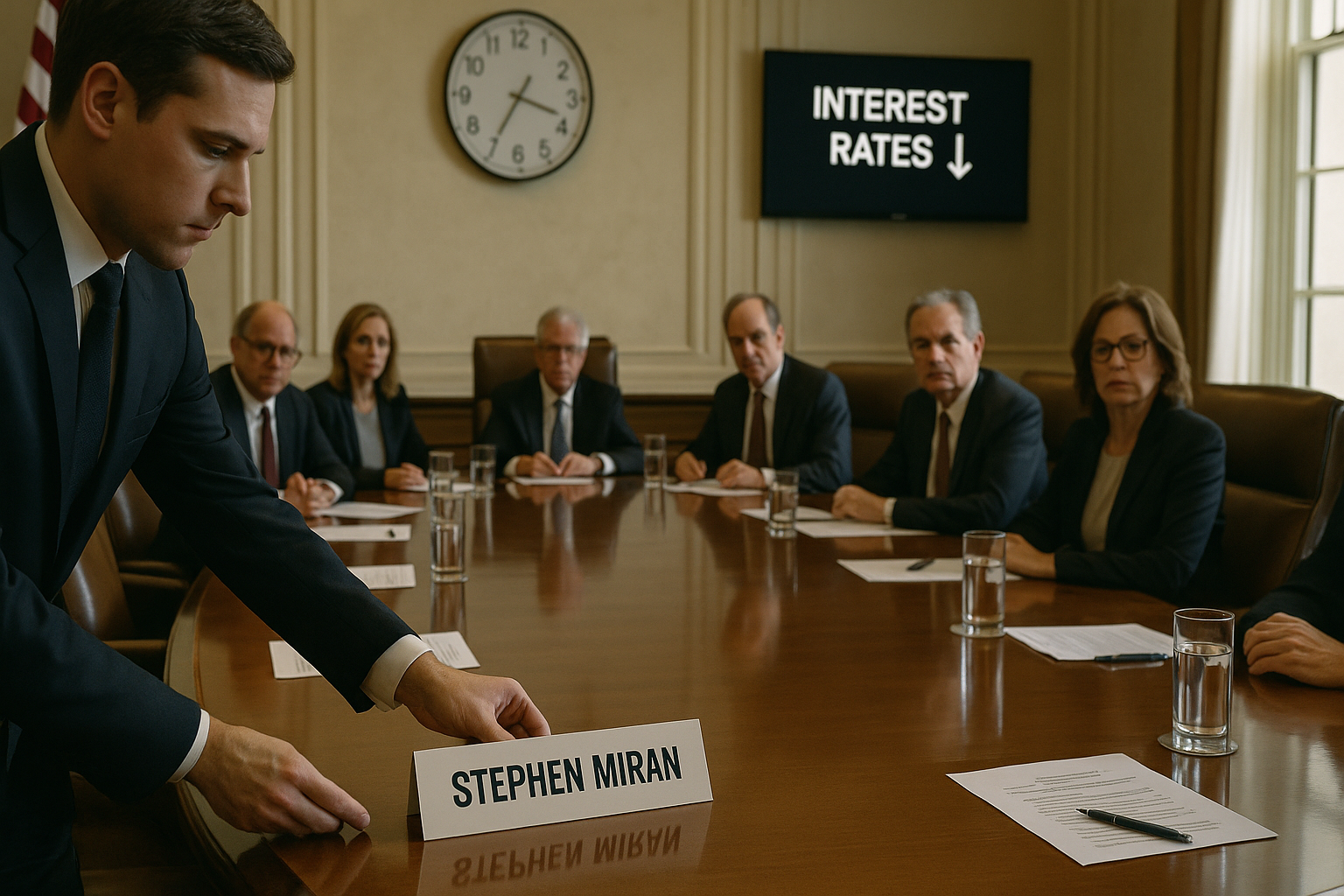The Senate has confirmed Stephen Miran to the Federal Reserve Board by the skin of his teeth—just 48-47—in what can only be described as a political squeaker. And talk about timing! Miran slides into his seat at the FOMC table mere hours before the committee's widely anticipated first interest rate cut of the year.
This is monetary governance with the subtlety of a last-minute substitution in a championship game. The Federal Reserve, an institution that practically invented the concept of "deliberate pace," now welcomes a voting member with barely enough time to find the bathroom before casting a vote on America's economic future.
I've covered Fed appointments for years, and let me tell you—this isn't normal.
What really strikes me about Miran's confirmation isn't just the razor-thin margin (though that's certainly telling). It's the strange arrangement regarding his day job. Rather than resigning as chair of the Council of Economic Advisers—you know, the standard protocol—he's taking a "leave of absence" with apparent plans to return after his Fed gig ends.
Hold up.
This creates a revolving door situation that would make even Washington lobbyists blush. The Fed was designed specifically to operate at arm's length from political pressures. Those 14-year terms for governors? They exist precisely to buffer monetary policy from election-cycle temptations.
Markets have shrugged this off, which is... interesting. Typically, a new Fed governor gets about as much market attention as a footnote in an academic paper. But Miran's just-in-time arrival for a rate decision—combined with those sticky White House connections—deserves more scrutiny than it's getting.
There's something happening here that reminds me of what I call "institutional erosion theory." (OK, I just made that up, but hear me out.) Major institutions don't typically collapse overnight. Instead, their foundations get chipped away through a series of precedents, each seemingly minor in isolation.
The timing here speaks volumes. With markets practically guaranteeing a rate cut this week—the only question being "how much?"—rushing Miran into place suggests his vote matters. Either for the size of the cut or to establish his voting record early in what could become a series of cuts conveniently leading into, ahem, election season.
Alan Greenspan famously said a Fed chair's job is to "take away the punch bowl just as the party gets going." These days, it seems some folks prefer to spike the punch right before voters head to the polls.
To be fair (and I should be), with inflation cooling and job numbers softening, there are legitimate economic reasons to cut rates now. This isn't purely political theater—but the stage directions are certainly written in partisan ink.
The Fed still maintains significant institutional strength, and Powell has proven surprisingly nimble at navigating political minefields. One governor—even one with a direct line to the White House—doesn't control the entire FOMC. But these subtle shifts in governance norms? They add up.
So while everyone obsesses over whether we'll see 25 or 50 basis points slashed this week, I'll be watching something else: the institutional dynamics that, frankly, might matter more for our economic future than any single rate decision.
Because sometimes, the real story isn't the headline. It's the fine print nobody bothered to read.
